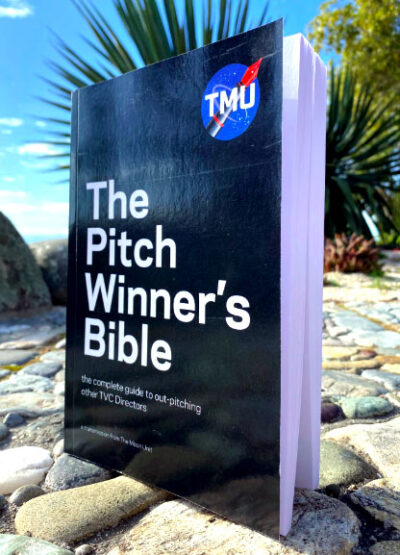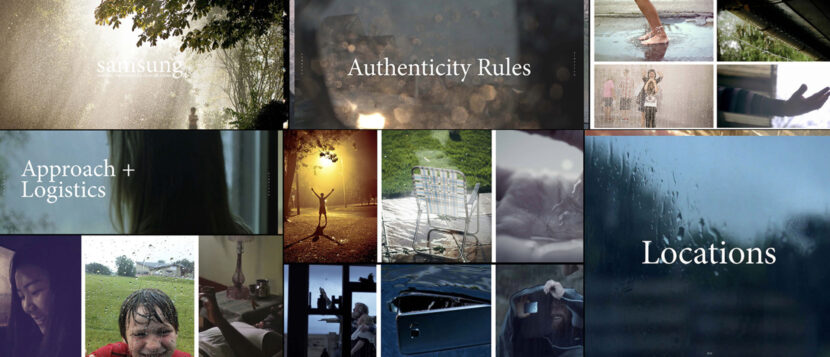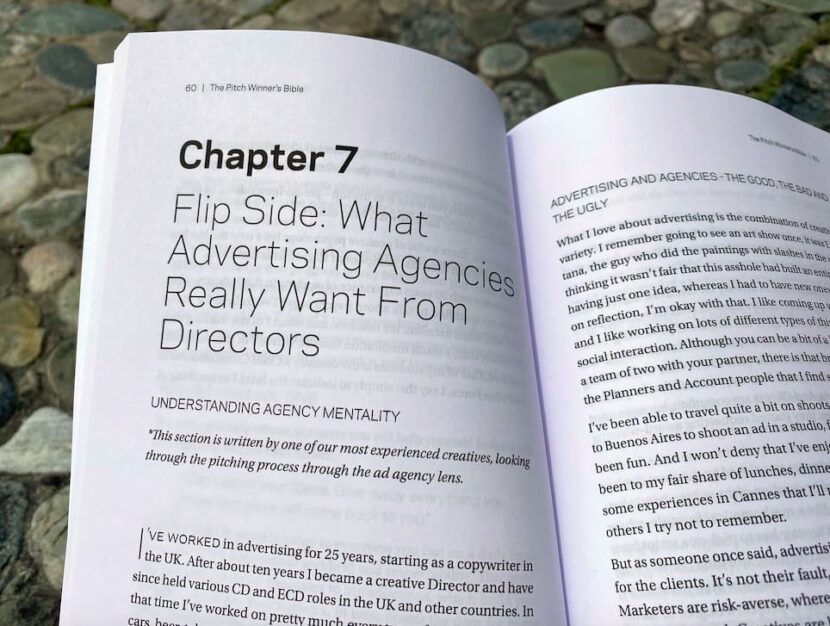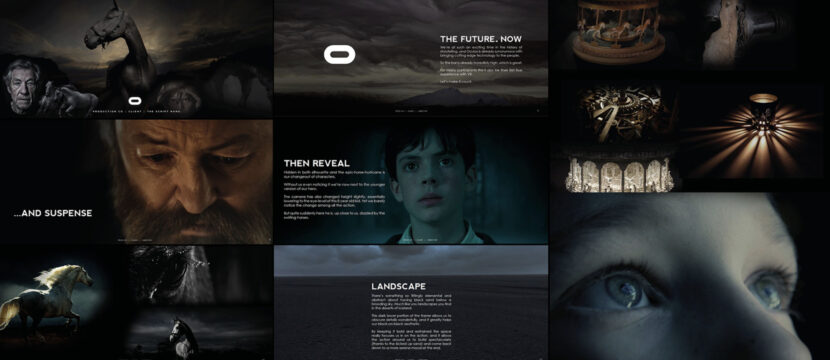Winning work is never easy, and an ongoing part of the business is writing pitches and treatments. While this is nearly always required, the task of making a compelling pitch doc can be extremely challenging for some people, and extraordinarily powerful for others.
The Moon Unit is a specialist team that aids in pitching for visual projects. The Moon Unit writers and designs to help directors and creatives produce incredible presentations from anywhere in the world, in record time. More than a design company, they are a creative partner that joins at the pitch stage of a project to help develop the visuals and style of a campaign, develop an idea, and produce full-length project treatments. In 2015 fxguide did a case study on pitching which you can read here with The Moon Unit. Much more recently, the company has published a comprehensive book and program on how to do treatments, called The Pitch Winner’s Bible. It is a 300-page book, with some 20 chapters. It is the same content as the company’s audio masterclass course with 15 x Intros and 18 x full-length treatments from global pitch-winning jobs in print form only.
The art of winning a pitch with a creative treatment is difficult to master, and there are very few industry sources that focus so completely on VFX and TVC in particular. The book is made up of advice, insights, and a large section of sample projects to build a treatment around. The redacted treatments provided, cover TVCs, both introductions, and full-length examples, spanning markets around the world. The book leans on examples from the USA, Europe, Indonesia, Russia, the UK, Australia, and elsewhere. The product categories are similarly rich, including shoe brands, beauty and liquor, beers, and high street fashion.
The Moon Unit has certainly been hugely successful in helping Directors, it is arguably the biggest and most experienced facility for pitching TV Commercials (TVCs) in the world. With some 60 creatives working around the world, and over 10 years of experience, that has notched up over a billion dollars worth of production budgets, they have an enormous well of experience to draw on. What is nice about this newest book is that it goes beyond just tips and tricks to illuminate what happens on the other side of the pitching process. It provides the reverse look at how your treatments are examined, reviewed and rewarded. The advertising agency process is opaque to most people in production, and thus the book explains clearly what agencies really want from directors and the agency’s mentality reading treatments.
The Moon Unit has seen it all in the last decade of doing pitches. “We’ve seen TVC treatments in PDF format with images, vary between 6 and 300 pages” the team outlines. Although an industry average, highly visual pitch, is normally 25 to 40 pages for a typical 30-sec TVC, containing about 1000 to 2000 words. That being said, the team points out, “if you haven’t got them in the first 20 lines – you’re toast.” Enter The Moon Unit team who can act as ghostwriters. At the core of being a good ghostwriter is emulating the thought and speech patterns of one’s subject convincingly, much like a novelist assumes the viewpoint of one of their characters.
Some may think hiring ghostwriters and experienced designers is somehow cheating. While clearly, some directors can write great treatments themselves, often they are already busy, turnaround times can be short and at the end of the day, a director is hired not as a pitch writer – they are hired as a filmmaker. Ultimately whatever makes your pitch stronger and increases your chances of making great work has to be a good thing, as The Moon Unit team points out, “it’s still the Director’s vision, and the Director drives it,” and it will be the Director’s actual finished piece that they are judges on and remembered for.
One of the most interesting sections of the book is discussing the greatest mistakes pitches make from the creatives’ point of view. The book claims the biggest mistake is not showing in your pitch that you ‘get the idea’. After all, the agency or client already has an idea, and it is around this idea one needs to pitch. “The most common mistake that Director’s make in the pitching process is trying to change the idea on jobs when there is no appetite for that.” The team goes on to point out that the Agency or the creatives commissioning the job make the biggest decisions that affect the project, but the director makes the most decisions that affect the outcome of the project.
One of the interesting trends in Advertising is that the pitches directors make are increasingly not to Advertising Agencies and not for TVCs. The Moon Unit has been involved in pitches for VR/AR, Esports, and many other non-TVC projects. Similarly, as the team points out, much of the work of Ad Agencies has been moving in-house to their clients. One of the major advertisers to lead this trend has been Apple. “For the past five years, their ad agency Media Arts Lab has seen a steady stream of layoffs, as Apple has taken more and more work in-house. But why Apple? Why would the brand that has benefited from arguably the best ad agency creativity in the world, via Lee Clow and TBWA/Chiat/Day, a partnership that produced iconic ads like ‘1984’ and ‘Think Different’, turn against ad agencies? Because they realised they could attract great creatives themselves,” points out The Moon Unit in a recent post. At fxguide we have spoken to directors and visual effects companies who regularly work ‘with certain fruit companies,’ but this work is never publicised and rarely appears on showreels, rather the work is done directly for the client’s in-house creative team. This presents a new challenge for young directors to become known and grow their own business.
“The difference between everyone else’s in-house agency and Apple’s in-house agency is talent,” says Greg Paull, principal, and co-founder at consultancy R3. “The world’s best are attracted to Cupertino and it makes it easier to develop big ideas in-house.” This trend is also being seen in major telcos, banks, and even beer brands. While managing online digital ads may have started this in-house trend for some companies to set up in-house teams, it is now progressing to having their in-house teams produce content and TV ads. Luke Wheatley, in-house creative director for Flight Centre, explained in an interview with AdNews pre-COVID: “If we go into production for our brand ad, every dollar you see on screen is the dollars that are on screen. It doesn’t go to an agency, it doesn’t go to a head of strategy – that you never even saw – it goes directly to the production company and it’s on-screen.”
This move to more direct client contact requires even more carefully crafted treatments that provide real insights and details as to how a creative idea will be executed. Most of the book is written by Alf Moon Unit Founder/CEO at The Moon Unit, who recently posted that “as if it weren’t already tough enough to be a freelance commercials Director, during the pitching process you have to sell your idea, your personality and sometimes what feels like your soul to the client… it’s not always the most skilled Director who gets the job, but the one who manages to sell their vision the best – so knowing how to write a treatment that stands out from the crowd is integral to success.”
 The Pitch Winner’s Bible is published by the company and part of Masterclass experience and it is not cheap. This is not an airport self-help generalist read. The book and course are not aimed at the casual reader, this is a detailed hard core tool for serious individuals and companies seeking concrete and specific aids in major pitches.
The Pitch Winner’s Bible is published by the company and part of Masterclass experience and it is not cheap. This is not an airport self-help generalist read. The book and course are not aimed at the casual reader, this is a detailed hard core tool for serious individuals and companies seeking concrete and specific aids in major pitches.
There is a free preview that can be downloaded, via the company’s web site, (enrollment required).



